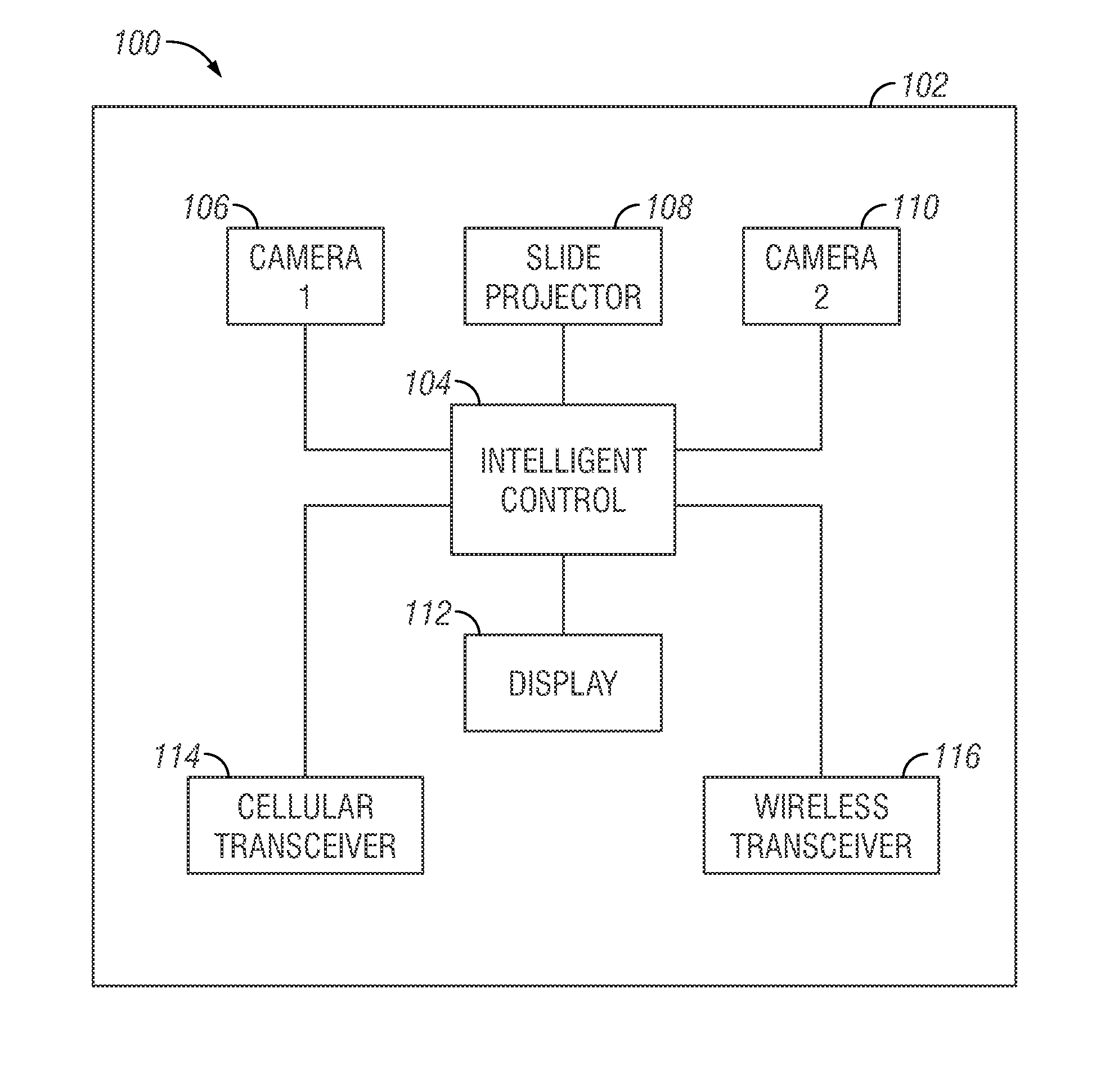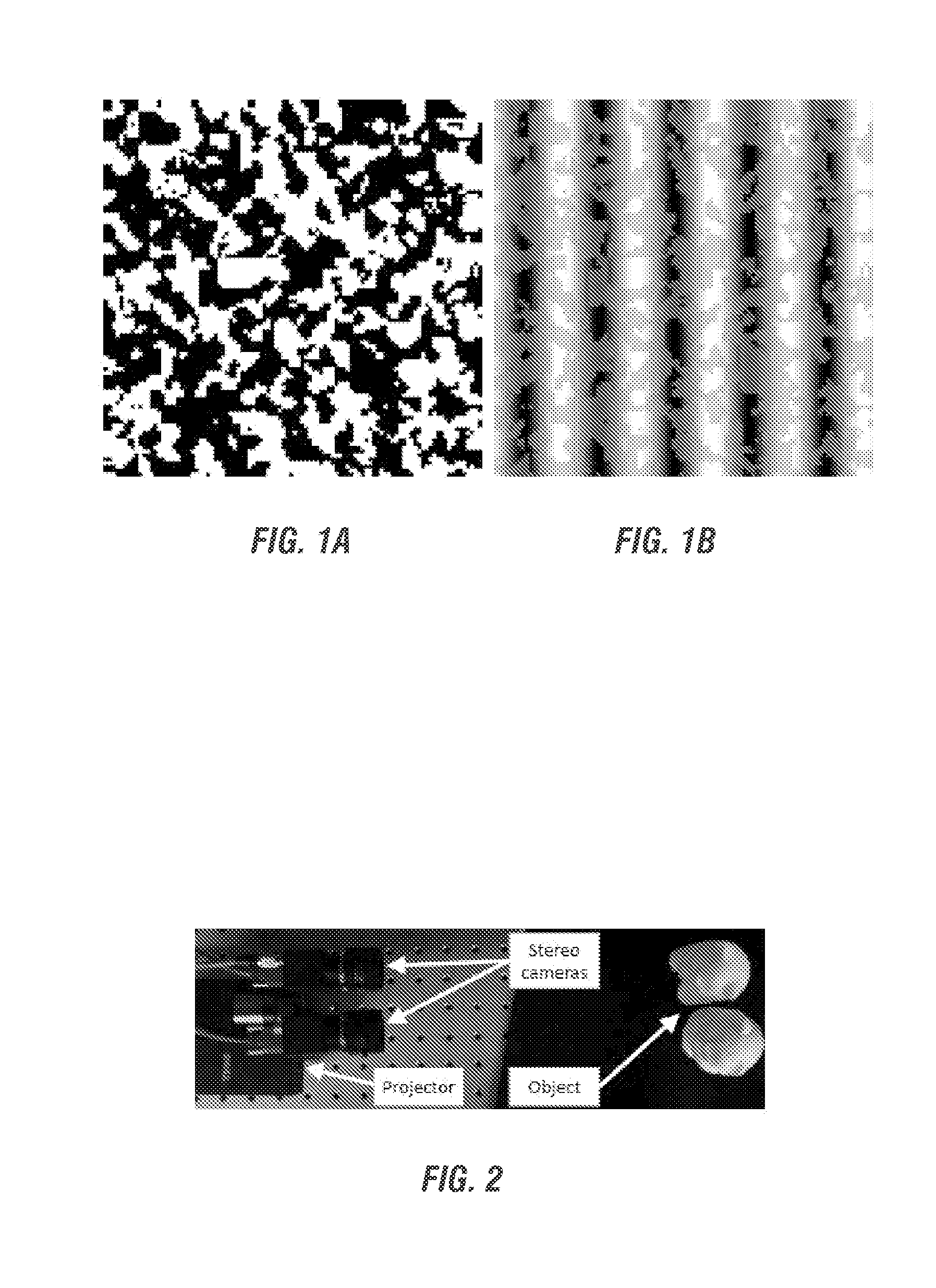Absolute three-dimensional shape measurement using coded fringe patterns without phase unwrapping or projector calibration
a fringe pattern and three-dimensional measurement technology, applied in the field of three-dimensional shape measurement, can solve the problems of fundamental limitation of the method, the inability of the method to accurately and densely reconstruct many real-world objects, and the passive stereo method
- Summary
- Abstract
- Description
- Claims
- Application Information
AI Technical Summary
Benefits of technology
Problems solved by technology
Method used
Image
Examples
Embodiment Construction
1. Introduction
[0033]Triangulation-based three-dimensional (3D) shape measurement can be classified into two categories: the passive method (e.g. stereo vision) and the active method (e.g., structured light). In a passive stereo system, two images captured from different perspectives are used to detect corresponding points in a scene to obtain 3D geometry [1, 2]. Detecting corresponding points between two stereo images is a well-studied problem in stereo vision. Since a corresponding point pair must lie on an epipolar line, the captured images are often rectified so that the epipolar lines run across the row [3]. This allows a method of finding corresponding points using a “sliding window” approach, which defines the similarity of a match using cost, correlation, or probability. The difference between the horizontal position of the point in the left image and that in the right image is called the disparity. This disparity can be directly converted into 3D geometry.
[0034]Standard cos...
PUM
 Login to View More
Login to View More Abstract
Description
Claims
Application Information
 Login to View More
Login to View More - R&D
- Intellectual Property
- Life Sciences
- Materials
- Tech Scout
- Unparalleled Data Quality
- Higher Quality Content
- 60% Fewer Hallucinations
Browse by: Latest US Patents, China's latest patents, Technical Efficacy Thesaurus, Application Domain, Technology Topic, Popular Technical Reports.
© 2025 PatSnap. All rights reserved.Legal|Privacy policy|Modern Slavery Act Transparency Statement|Sitemap|About US| Contact US: help@patsnap.com



